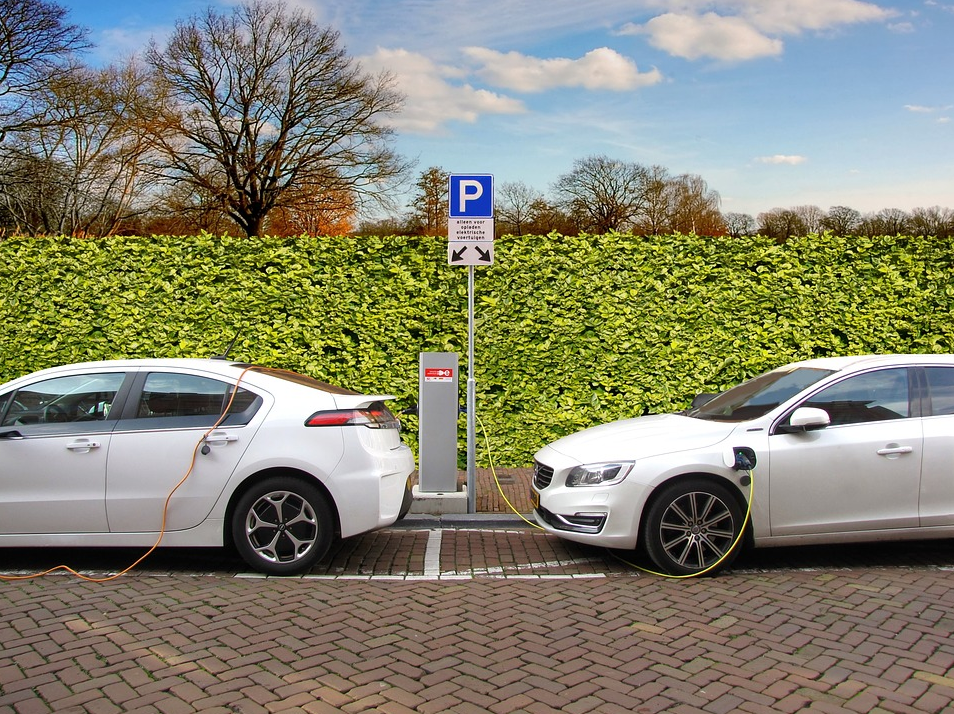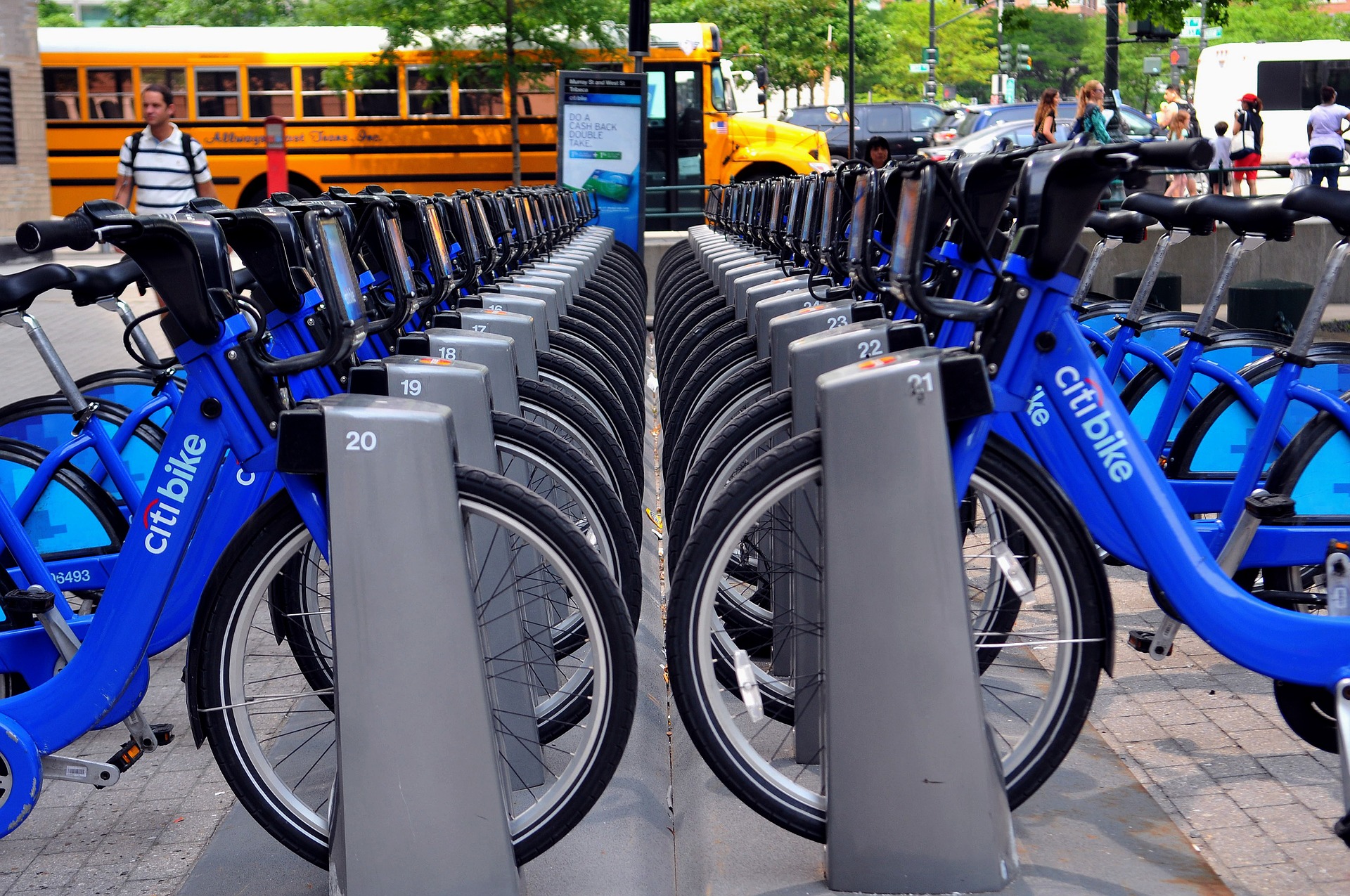The Past, Present, and Future of Transportation
Mobility hubs are the train stations and bus depots of yesterday, and incorporate today’s new mobility options like rentable scooters, bike sharing, and car sharing. They take an analog Arrivals Board and add interactive wayfinding, real-time traffic data, and universal payment options. Future plans for mobility hubs promise even more, when tomorrow’s technology brings us autonomous vehicle sharing and wireless charging for electric vehicles.
The concept of centralizing transportation options is not a new one, but well-planned mobility hubs are emerging now due to advances in technology, the growth of shared mobility, and goals to reduce gridlock and emissions. There is also evidence that they are effective at getting cars off the road and freeing up old parking lots for new housing and economic development.
Major mobility hubs are being planned in cities such as Los Angeles, Seattle, Boston, and Minneapolis. In San Diego, for example, mobility hubs are a key component to the area’s transportation vision. A conceptual plan shows a dozen different services to illustrate how mobility hubs can be “places of connectivity where different modes of travel – walking, biking, transit, and shared mobility – seamlessly converge.”

Mobility hubs are providing an expansive array of transportation solutions for urban areas.
To advance and understand the possibilities of new mobility, the Rocky Mountain Institute launched an experimental Community Mobility Hub in Austin, Texas. The goal was “to demonstrate a scalable approach for tackling the environmental, health, and equity impacts of our mobility system, including the urban design patterns that are so interconnected with it.”
The findings? Car trips are down. More people are walking. Community interaction is increasing. And dockless scooter and bike use is rampant.
Those results directly correlate with the project’s goals to “reduce emissions, improve physical health, improve mental health and well-being, and enhance equity and access.”
Another, earlier leader in this planning and research is Michael Glotz-Richter, a senior project manager for sustainable mobility for the City of Bremen, Germany. He was at the forefront of the mobility hub concept with the Mobil.Punkt system.
His city has integrated car sharing and other resources with public transportation through mobility hubs, and has “set a target of 20,000 car sharing users by 2020 and, more important, the replacement of about 6,000 private cars through the service of car sharing.” Car-sharing there has grown from three cars and 28 users in 1990 to 11,000 customers in 2015.
The Shared-Use Mobility Center presented some of Glotz-Richter’s lessons learned from the last 15 years of planning and implementing the Mobil.Punkt system. The number one tip is to “build around strong transit stops.” According to Glotz-Richter, “Transit is the cornerstone to creating a life where you don’t need to depend on car ownership.”
Other lessons learned include: target areas with high parking pressure; get as close as possible to your users; leverage mobile technology for wayfinding and fare integration; make mobility hubs visible; and market mobility hubs.

Dockless scooter use has skyrocketed over the past two years, easing reliance on more traditional forms of transportation. (Source: Nadine Shaabana)
Metrolinx in Ontario, Canada, has some of the most comprehensive information, design profiles, studies, and guidelines on mobility hubs. The transit agency is committed to an integrated transportation system.
“The hubs will be centres of activity, attracting opportunities for live, work, and play, that are connected to the rest of the region through reliable, rapid transit,” the agency states. “This potential can be achieved with the successful integration of land use and transportation planning, committed private sector partners, strong stakeholder engagement and a common vision for the future.”
IMS has recently seen an increase in the number of mobility hub projects (RFPs and RFQs) from public agencies. These are projects for architectural designs, urban planning, public transit planning, and traffic studies. IMS covers these opportunities through daily project leads and Advance Notice information for its A/E/C clients.
IMS covered one or two mobility hub projects per year from 2012 to 2016. In 2017 and 2018, there were about four of these projects each year. In the first 10 months of 2019, IMS has covered 12 mobility hub projects. Some recent projects include:
* The Southern California Association of Governments released an RFP in September 2019 for an update to the Westside Mobility Study to identify new projects and investments that address issues for all transportation modes. The study will analyze priority corridors for bicycle infrastructure and the development of future mobility hubs (IMS 482027).
* Miami-Dade County, Fla., released an RFP in September 2019 for a rapid mass transit solution for the Beach Corridor Trunk Line, including the development of multimodal hubs (IMS 475673-1)
* In California, the Riverside Transit Agency issued an RFP in August 2019 for conceptual design plans for a mobility hub adjacent to the Riverside Downtown Metrolink Station (IMS 481333).
* The Metropolitan Transportation Commission in San Francisco sought a consultant in July 2019 to create car-share implementation tools and conduct a mobility hub location analysis (IMS 478303).

Bike share programs of many different kinds are a boon to cutting down traffic in populated areas.
* The City of Boston, Mass., released an RFP in early 2019 for design and engineering services for Neighborhood Mobility microHUBs, an initiative to provide access to bike share, car share, ride hailing, wayfinding, and real-time information at prominent locations including neighborhood transit stations (IMS 460003).
* The City of Seattle, Wash., issued an RFQ in December 2018 for a consultant to improve wayfinding and implement placemaking interventions to highlight transit connections at the Westlake Station shared mobility hub (IMS 451645). Earlier that year, the City released an RFP for a consultant to develop a dynamic electric vehicle service equipment siting model and a charging infrastructure roadmap for mobility hubs across the City (IMS 424822).
* IMS published an Advance Notice and the subsequent RFQ in 2018 from the Nashville Metropolitan Transit Authority for architectural and engineering services for transit shelters, neighborhood transit centers, and mobility hubs (IMS 431982-2).
* The City of Fort Lauderdale, Fla., issued RFP/Qs in 2017 and 2018 for engineering services for a Downtown Mobility Hub (IMS 409376) and for construction engineering and inspection services (IMS 421796).
There are now concept plans, success stories, and research for mobility hubs. It’s no wonder why more public agencies are moving forward to integrate mobility hubs into the transportation network.